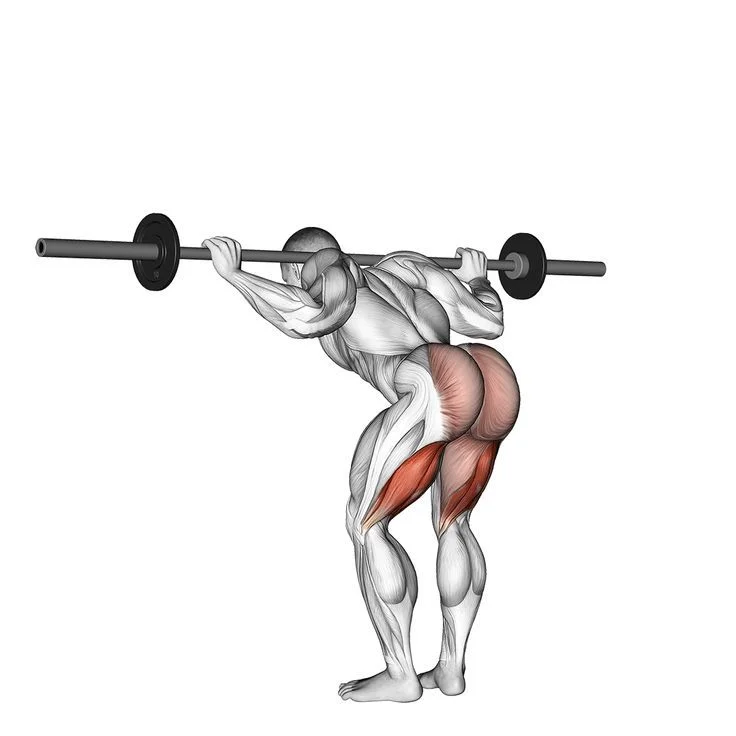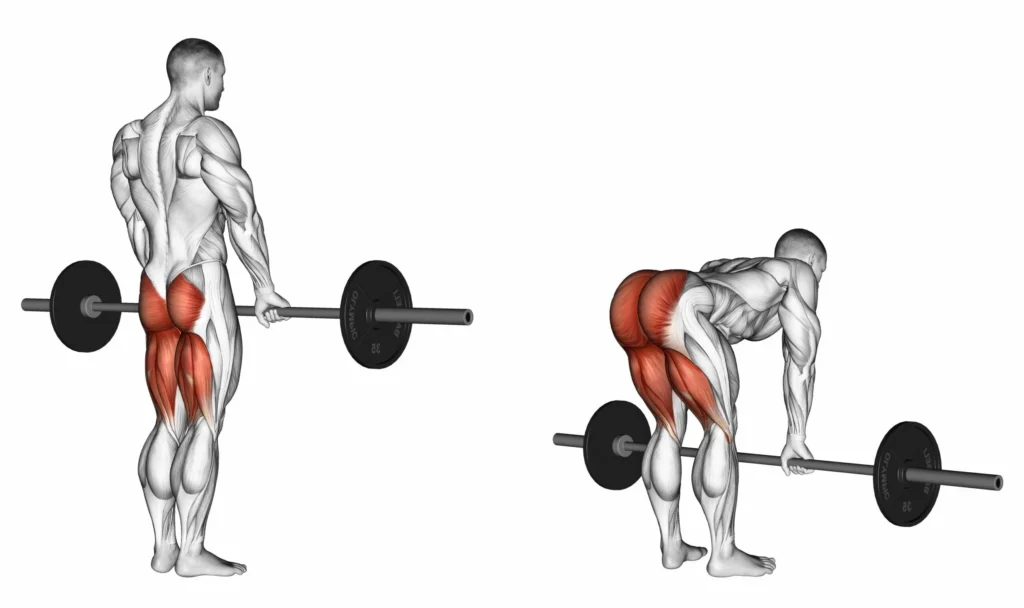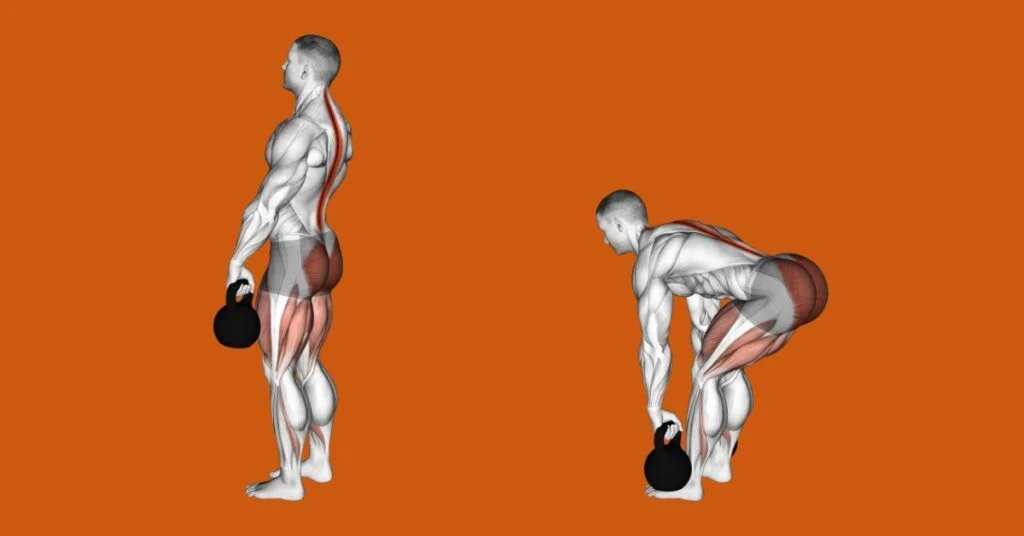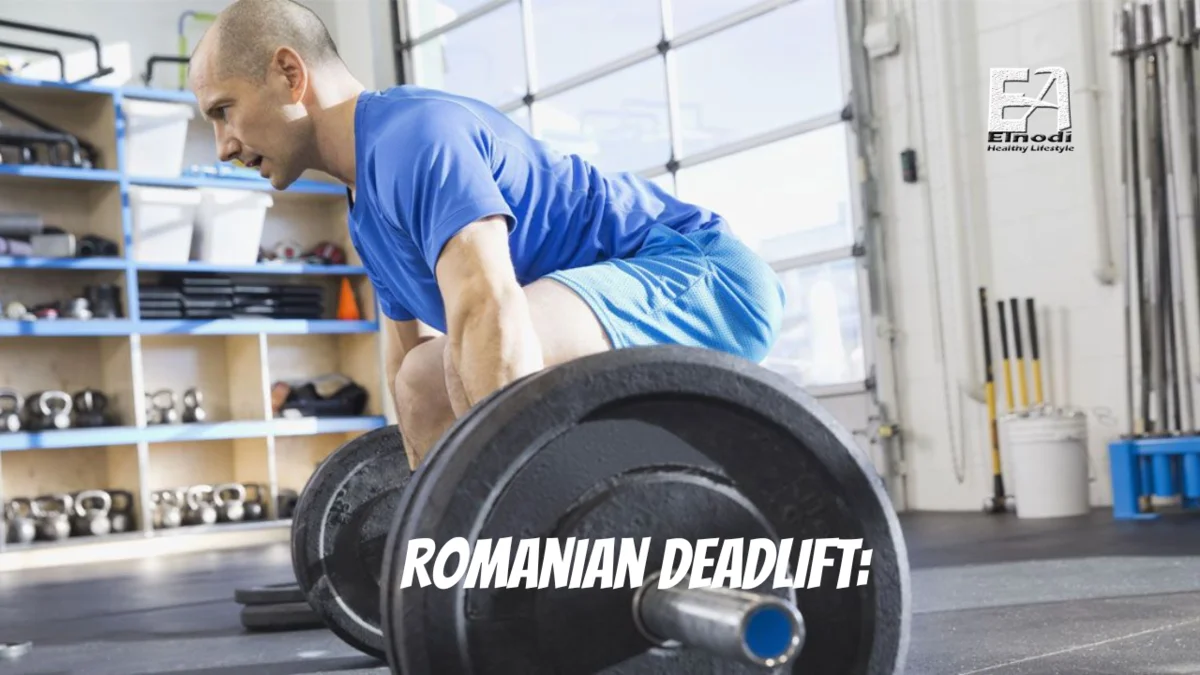The Romanian Deadlift (RDL) is a challenging compound exercise that combines the benefits of the deadlift and the Romanian deadlift. This exercise targets the entire posterior chain- your glutes, hamstrings, and quads- which can help you achieve better overall fitness and muscle growth.
What is The Romanian Deadlift?
RDL is a traditional barbell exercise for strengthening the muscles of the posterior chain, including the glutes, hamstrings, and lower back.
It is usually performed with a barbell, but dumbbells and kettlebells are common variations.
Because the Romanian deadlift is a complex exercise that trains multiple muscular groups at once, it can be a time-saving addition to many training programs.
Romanian Deadlift Benefits
Better mobility. According to Hulslander, the hip-hinge action improves mobility and range of motion in the hips, hamstrings, and lower back.
Less stress on joints. RDLs can be performed with less weight than standard deadlifts, reducing joint stress, according to Hulslander.
Sculpted abs. RDLs also work your core “because having to keep your core really rigid and brace throughout that movement pattern is a challenge,” says McParland.
Strong back. Keeping the weight(s) close to your body tones your lats (also known as your back’s latissimus dorsi muscles). “If you actively pull the bar into your legs, you’re going to feel your lats turn on in a second,” McParland adds.
Improved grip strength. She believes that RDLs are essential for improving grip strength. This might help you attain your other fitness #goals in the gym with ease. You may not realize it, but grip strength is useful in racquet sports, picking up almost anything, cooking, and so much more. (1)
Romanian Deadlift muscles worked
Glutes: The gluteus minimus, gluteus medius, and gluteus maximus make up the glute complex. These muscles combine to form the “buttocks” muscular complex. Your glutes’ principal action is to aid you during the second part of the RDL as you seek to return to your starting position by extending your hips to lockout. (2)
Hamstrings: The lengthening sensation you will feel in the muscles on the backside of your leg as you pivot during an RDL is your hamstring muscles firing on all cylinders. Your hamstrings, which are one of the key posterior chain muscles, are made up of the biceps femoris, semimembranosus, and semitendinosus.
Adductors: The pectineus, adductor brevis, adductor longus, adductor magnus, and gracilis are the adductor muscles’ constituents. These muscles make up the majority of the inner thigh muscle. They help you throughout the hinging phase of an RDL and give internal pelvic support during the lockout phase.
Abdominal Muscles: The core musculature’s role during the RDL is one of protection, particularly around the spine. By inhaling a significant amount of air and holding it while simultaneously stretching the muscles of your abdomen to be as stiff and rigid as possible, you can increase your intra-abdominal pressure and brace for the load. (3)(4)
Romanian Deadlift form
How to do Romanian Deadlift correctly

Instructions
- Assume a hip-width stance and place the bar over the top of your shoelaces.
- Assume a double overhand hold just outside of hip width and deadlift the weight to the top, locking out the hips and knees.
- Begin the RDL by pulling your hips back and forward until the barbell is just below your knees.
- Drive the entire foot and concentrate on pushing the floor aside.
- Return to the starting position and repeat as many times as required.
Tips
- Individual mobility and capacity to maintain a neutral spine will mostly dictate the range of motion in the lift. Standing on a box or bench is generally unproductive because most people lack the mobility to successfully control that much range of motion.
- When going really heavy, it is normally recommended that you use straps or hook grip if grip is the limiting factor, as mixed grip may cause the bar to drift.
- The neck position is highly individual – Some prefer a neutral neck position (i.e. keeping the chin tucked throughout the lift) while others do well with looking slightly up. Here are some factors to consider:
- If you are more generally extended (athletic background), you will likely be able to maintain a neutral stance more successfully by packing the chin.
- On the other end of the spectrum, if you tend to be more flexion dominant (particularly in your thoracic spine – upper back), looking up slightly will cause more extension.
- Experiment with each and see which one works best for your individual anatomy and biomechanics.
- Allow the bar to graze your legs during the eccentric portion of the lift rather than drift away from the body.
- Make sure your thumbs are wrapped around the barbell and that you are not using a fake grip. Squeeze the bar as tightly as you can, as if you were trying to leave an imprint of your fingerprints on it.
- Your weight will naturally shift to your heels as you hinge; however, it’s important that you keep the weight distributed over your whole foot and don’t allow the toes to rise. To combat this, you should focus on maintaining 3 points of contact: big toe, little toe, and heel.
- Make sure the elbows are locked out. Don’t intentionally flex the triceps, but make sure your elbow doesn’t break neutral, as this can put you in danger of a bicep injury while lifting heavy weights.
Romanian Deadlift Common Mistakes
Not Keeping The Bar Close: Isn’t it tough to pick up a laundry basket when you have to leave a foot of space between you and the basket? The same concept applies when performing the RDL.
The further away the bar is from your body, the heavier it will feel, potentially altering your balance and muscular activation. The closer the bar is to you, the more leverage you will have when lifting it.
Excessive Back Rounding: Excessive back rounding can occur for a variety of reasons, including One possible cause that the barbell is too far away from you, or you’re performing the RDL incorrectly, assigning undesired and unnecessary tension to your lower back, increasing your chance of injury.
For this reason, keep your back flat and lift using your legs. If you notice your back rounding excessively, the weight is probably too heavy.
Too Much Knee Bend: Excessive knee bending will cause the exercise to resemble a traditional deadlift, targeting various muscle groups. This may result in the loss of intended RDL advantages. (5)
Keep an eye on your knees; they should be slightly bent throughout the movement, but you shouldn’t lift with your quads.
Build a Better Backside: No matter where you are on the weight room spectrum, you can probably incorporate the RDL or one of its many variations into your training arsenal. It may help both novices and professional athletes achieve their goals, whether it’s physique development, improved athletic performance, or simply feeling better on a daily basis. (6)
Romanian deadlift alternative
Good Mornings

The Good Morning is a hip hinge just like the Romanian deadlift, and works similar muscles.
The main distinction is that instead of holding the bar in your hands, you’ve slung it over your shoulders. This makes the good morning resemble the squat (at least the hip extending part of a squat), which may make this exercise a better choice if you want to improve your squat.
Stiff-Legged Deadlift

The stiff-leg deadlift is extremely similar to the Romanian deadlift, with the primary difference being that you start and finish each rep with the barbell on the floor.
Because you reset at the floor between reps in the stiff-leg deadlift, you can probably lift slightly bigger loads. On the contrary, because you keep your muscles tensioned throughout the Romanian deadlift, it may be slightly better for muscular building.
Romanian deadlift kettlebell

He uses a kettlebell. The Romanian deadlift is a hip-hinge exercise that focuses on the hamstrings and glutes. It may be done with a single kettlebell, making it an excellent home workout alternative.
Romanian deadlift Variations
Romanian deadlift dumbbell: The barbell The Romanian deadlift is a variant of the Romanian deadlift that employs dumbbells rather than a barbell. It is an excellent workout for the hamstrings, glutes, and lower back.
Deficit Romanian Deadlift. If you have good mobility, you could wish to practice the Romanian deadlift while standing on a plate or a block to go deeper without hitting the floor.
Romanian Deadlifts from Blocks. If your mobility is limited or you want to prevent reversing a big weight in mid-air, you can rest the bar on a set of lifting blocks to aid in stopping the downward motion.
Romanian deadlift vs. deadlift
Both the Romanian deadlift and the deadlift are compound workouts that target the posterior chain (hamstrings, glutes, and lower back). There are, however, some significant distinctions between the two tasks.
The deadlift starts with the bar on the floor and moves through the whole range of motion, from floor to stand. The RDL, on the other hand, begins with the bar at or slightly above the knees and only descends to the level of the knees. As a result, the RDL has a narrower range of motion than the deadlift.
Because you start with the bar on the floor, the deadlift allows you to lift more weight than the RDL. This is due to the fact that the deadlift activates more muscular mass, including the quads and lats. The RDL, on the other hand, focuses on the hamstrings and glutes.
| Feature | Romanian deadlift | Deadlift |
|---|---|---|
| Range of motion | Knees to hips | Floor to a standingSS position |
| Muscles worked | Hamstrings, glutes | Hamstrings, glutes, quads, lats |
| Weight lifted | Less | More |
| Difficulty | Easier | Harder |
FAQs
What are Romanian deadlifts good for?
Are Romanian deadlifts better than squats?
Does Romanian Deadlift Work Back or Legs?
How do I protect my back during RDLs?
References
1. Lee, S., Schultz, J., Timgren, J., Staelgraeve, K., Miller, M., & Liu, Y. (2018). An electromyographic and kinetic comparison of conventional and Romanian deadlifts. Journal of Exercise Science & Fitness, 16(3), 87-93.
2. McAllister, M. J., Hammond, K. G., Schilling, B. K., Ferreria, L. C., Reed, J. P., & Weiss, L. W. (2014). Muscle activation during various hamstring exercises. The Journal of Strength & Conditioning Research, 28(6), 1573-1580.
3. Blazek, D., Stastny, P., Maszczyk, A., Krawczyk, M., Matykiewicz, P., & Petr, M. (2019). A systematic review of intra-abdominal and intrathoracic pressures initiated by the Valsalva maneuver during high-intensity resistance exercises. Biology of Sport, 36(4), 373-386.
4. Stokes, I. A., Gardner-Morse, M. G., & Henry, S. M. (2010). Intra-abdominal pressure and abdominal wall muscular function: Spinal unloading mechanism. Clinical biomechanics, 25(9), 859-866.
5. Bird, S., & Barrington-Higgs, B. (2010). Exploring the deadlift. Strength & Conditioning Journal, 32(2), 46-51.
6. Morencos, E., González-Frutos, P., Rivera, C., & Veiga, S. (2022). Effects of Six Weeks of Flywheel Single-Leg Romanian Deadlift Training on Speed, Jumping and Change of Direction Performance. International Journal of Environmental Research and Public Health, 19(3), 1200.





